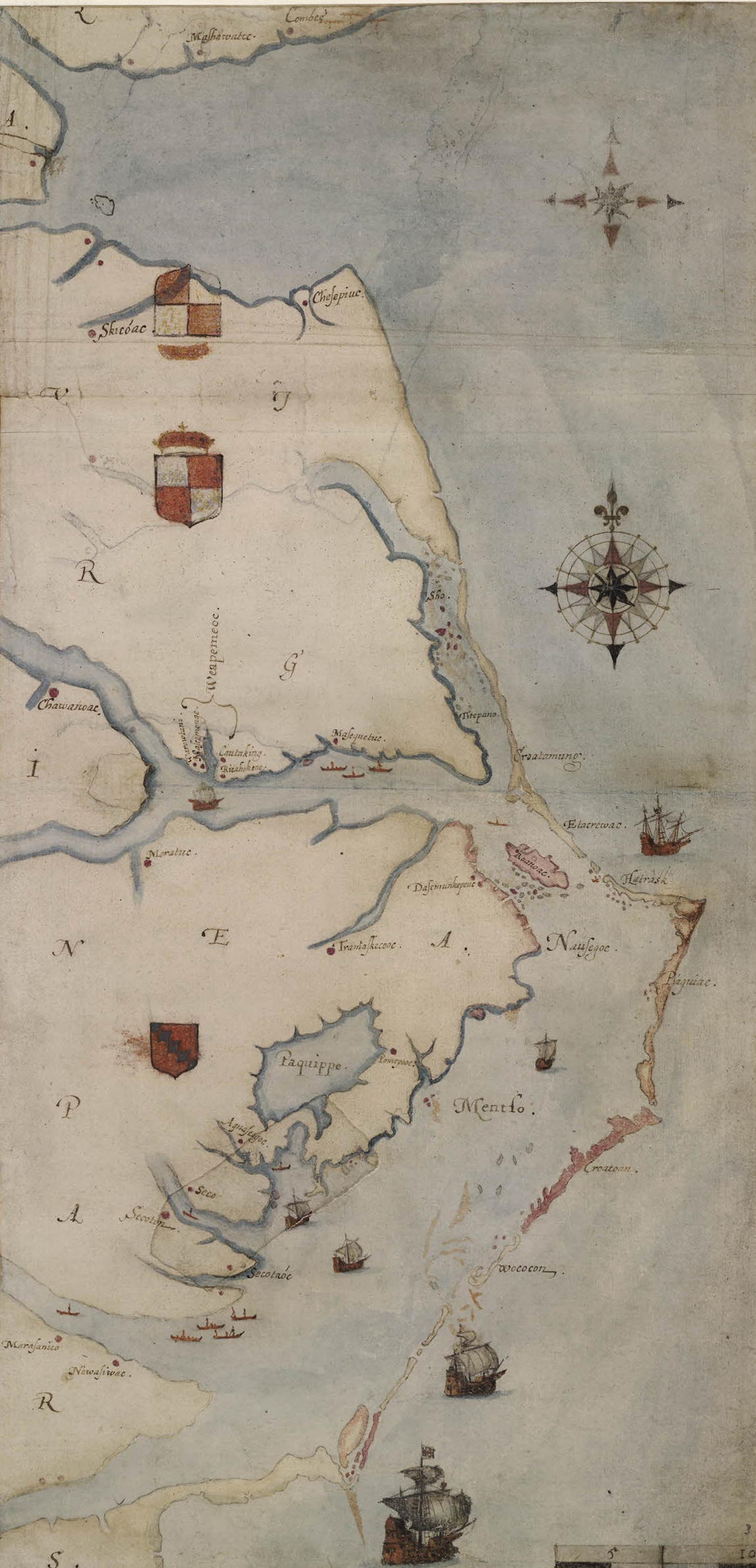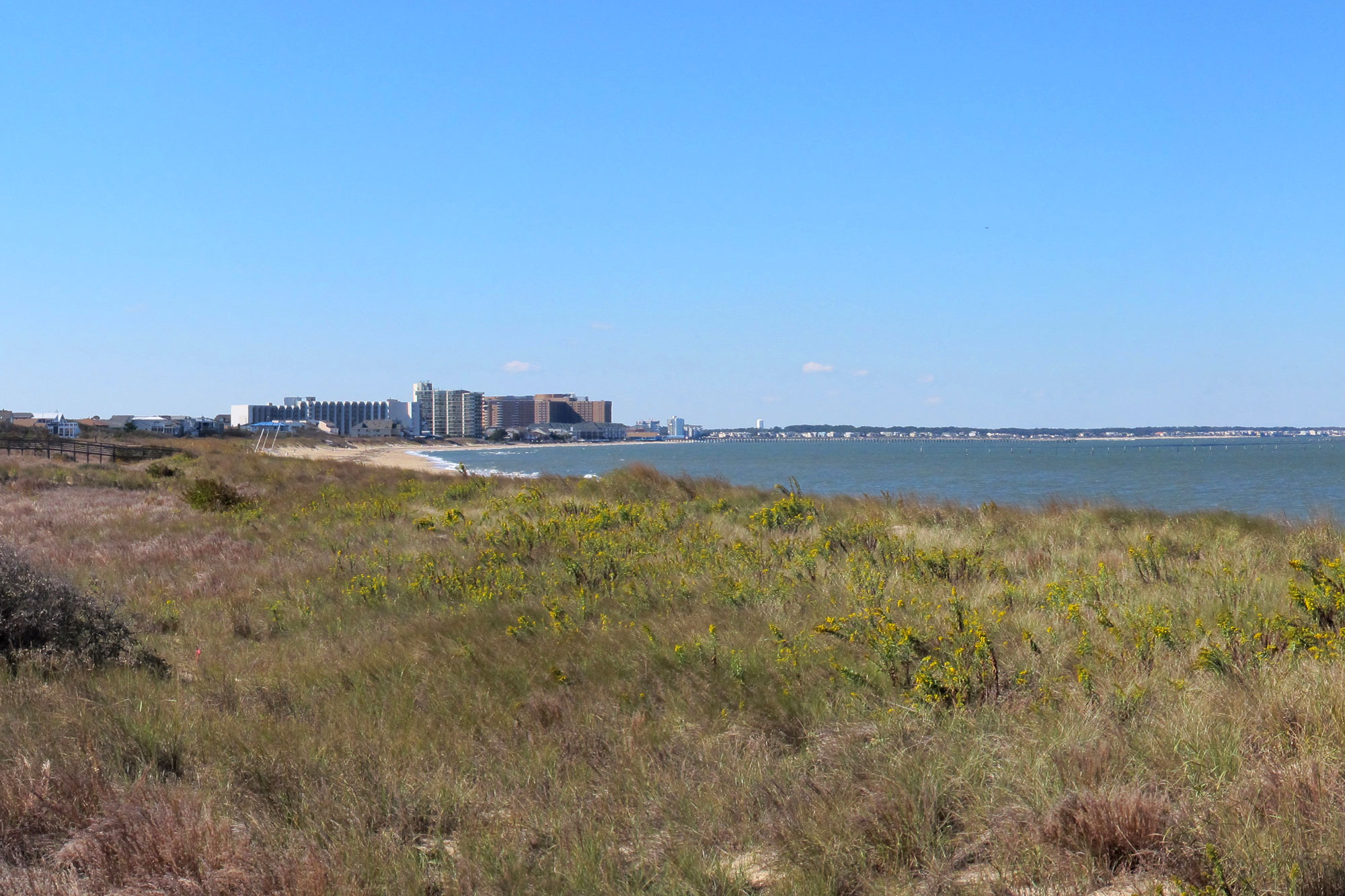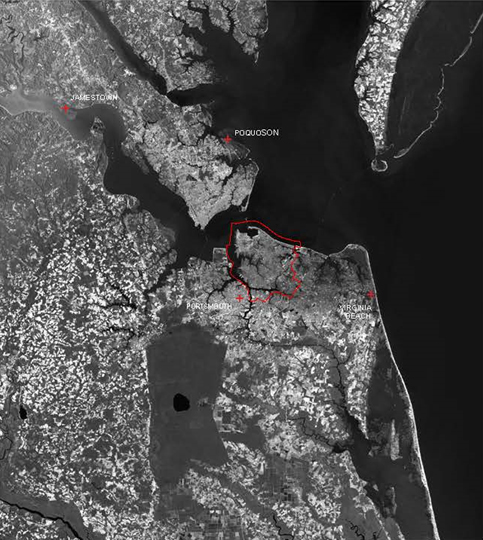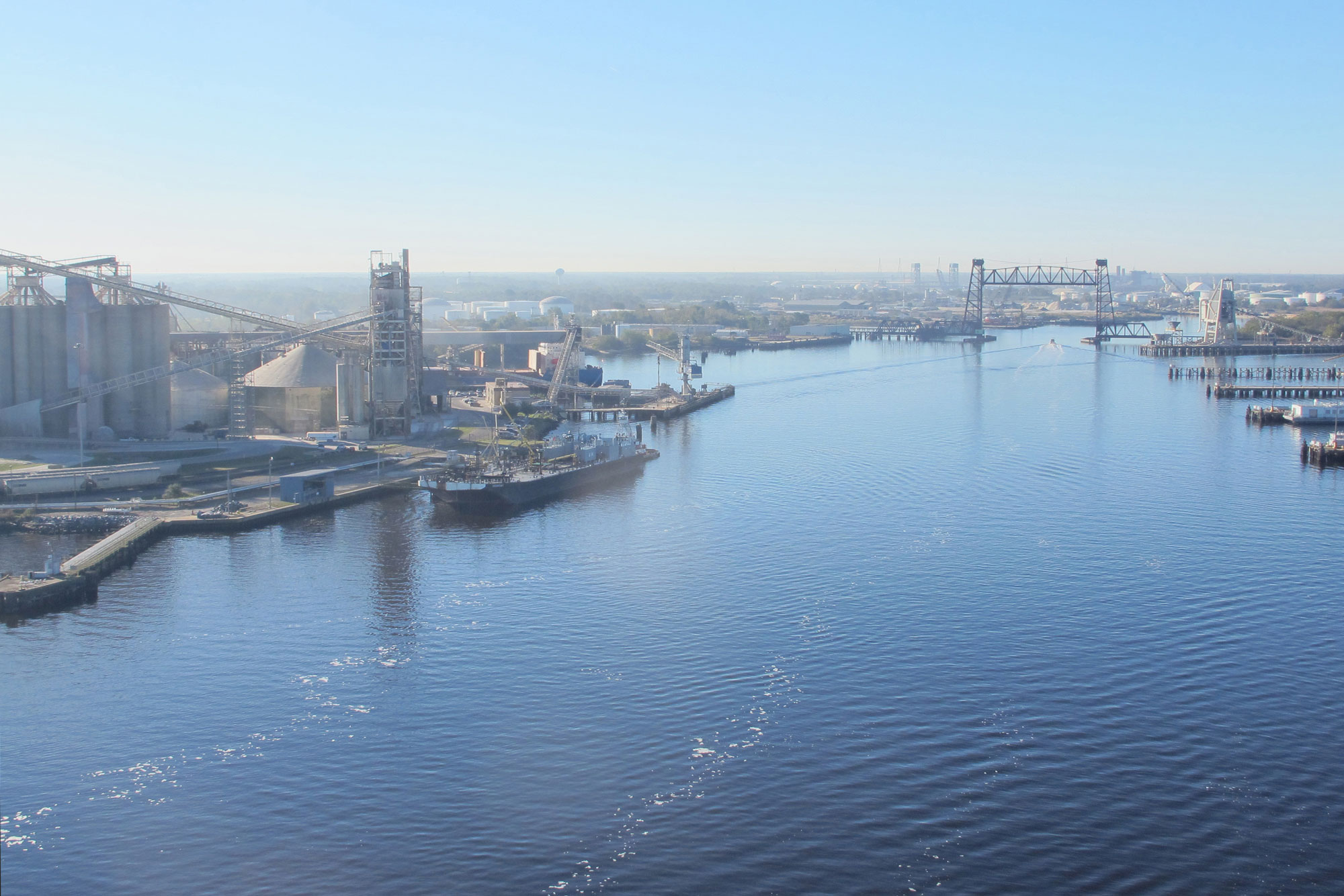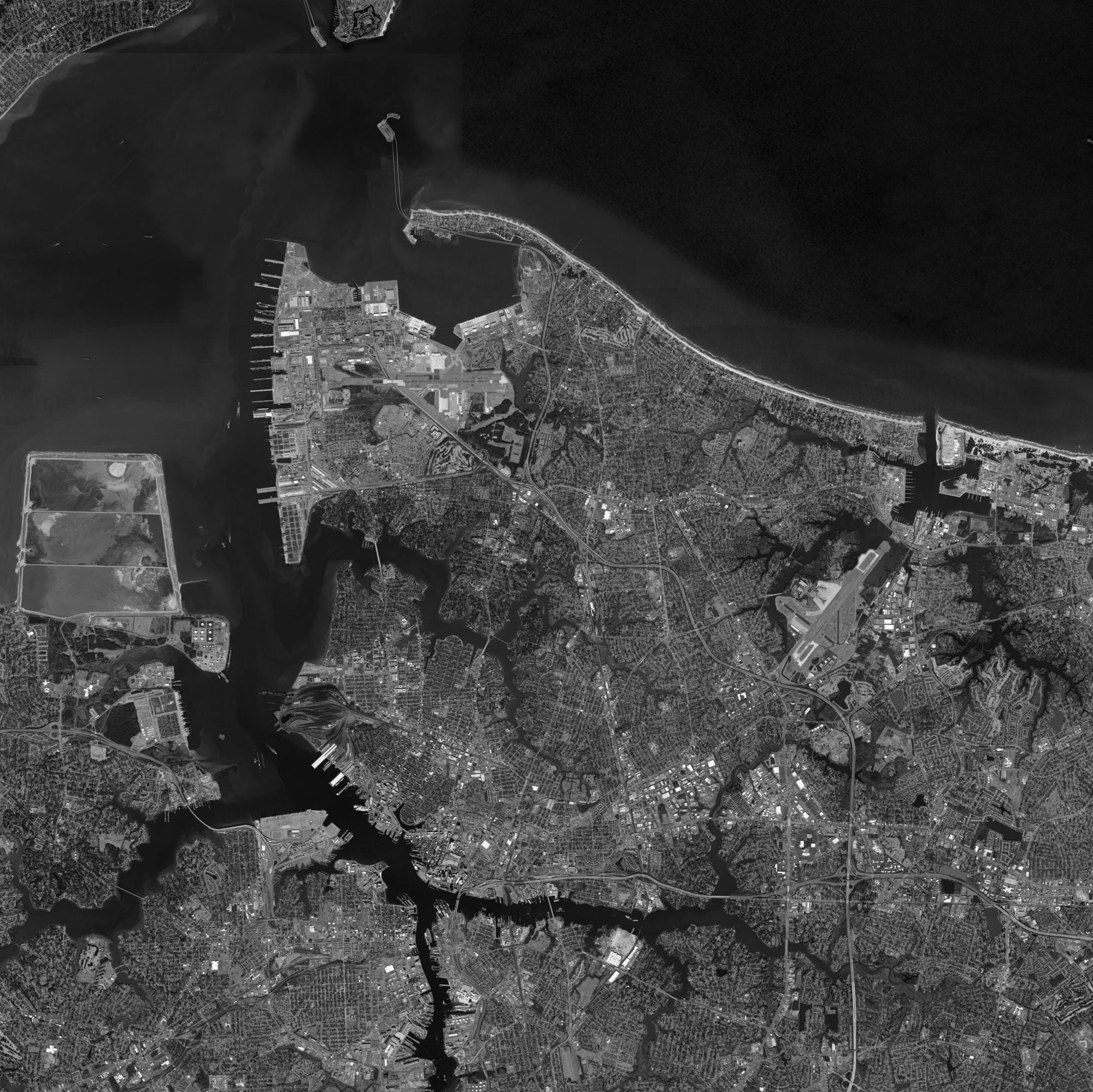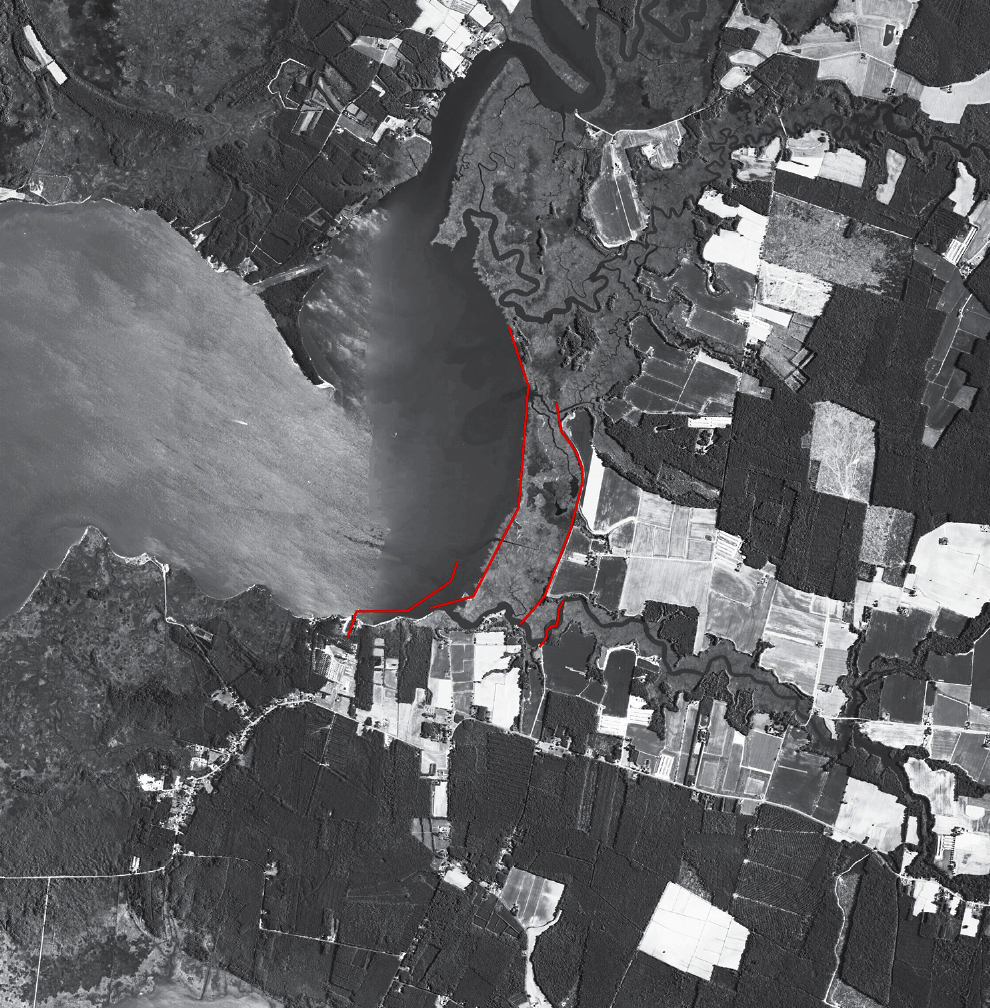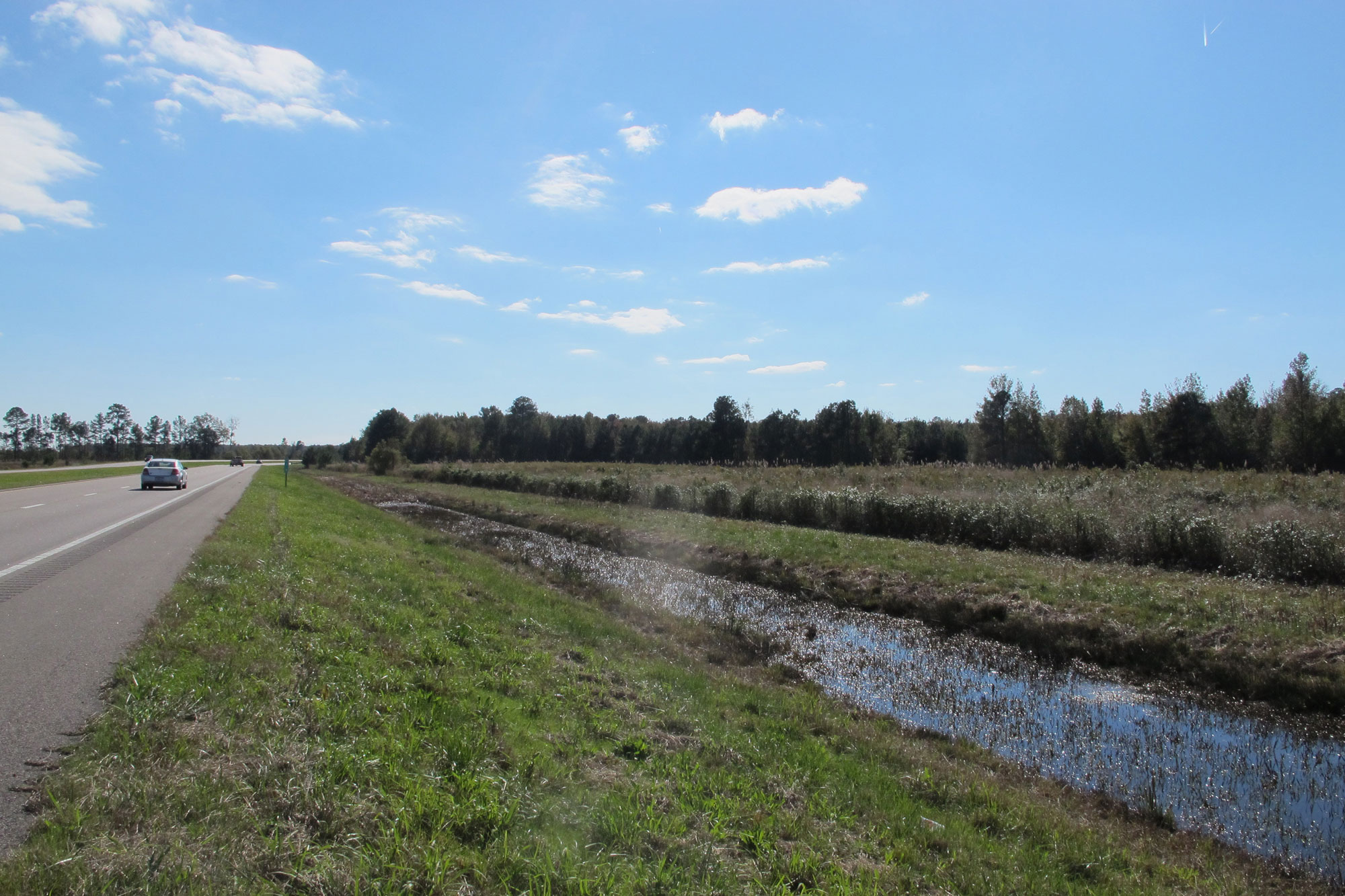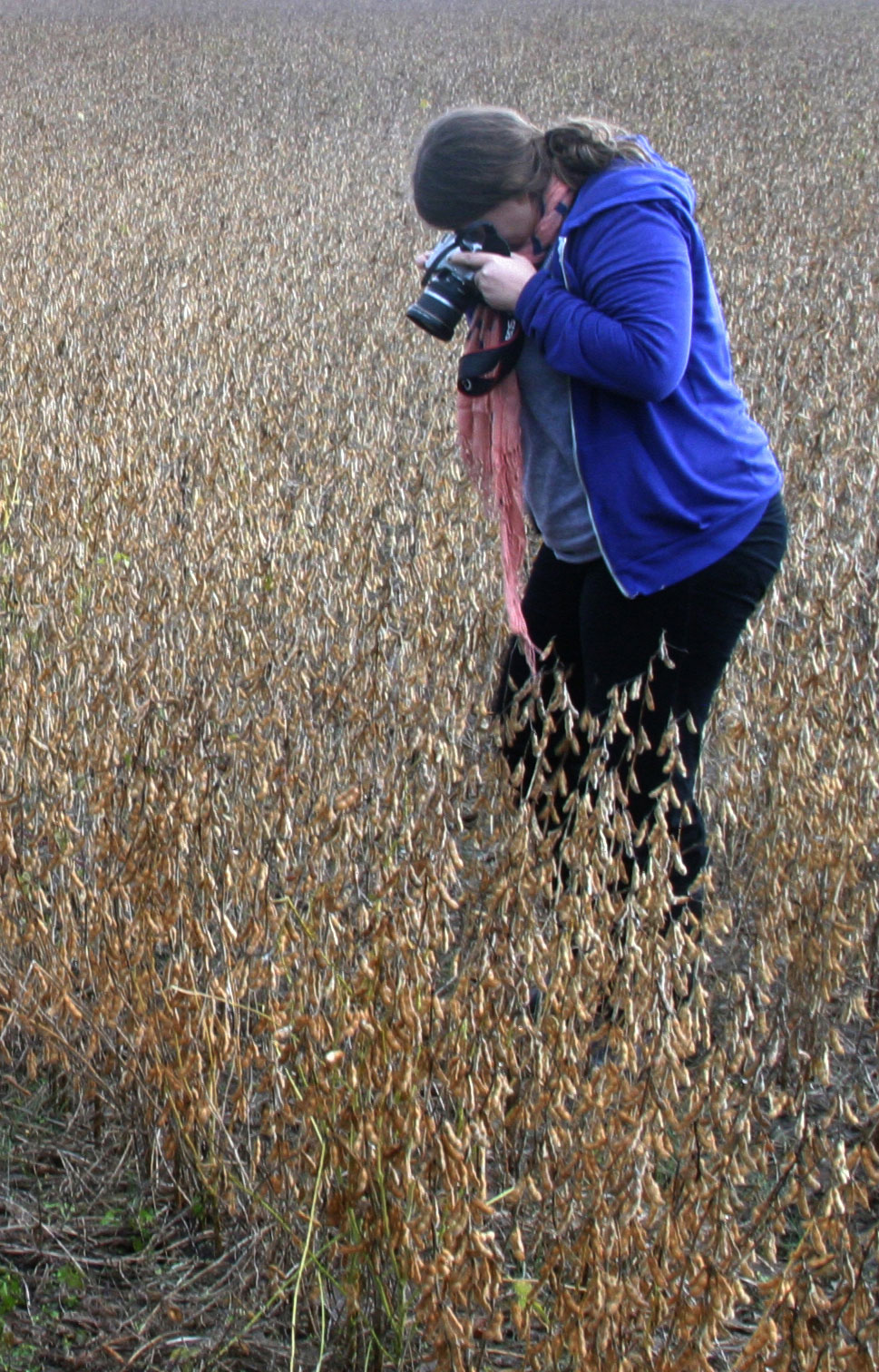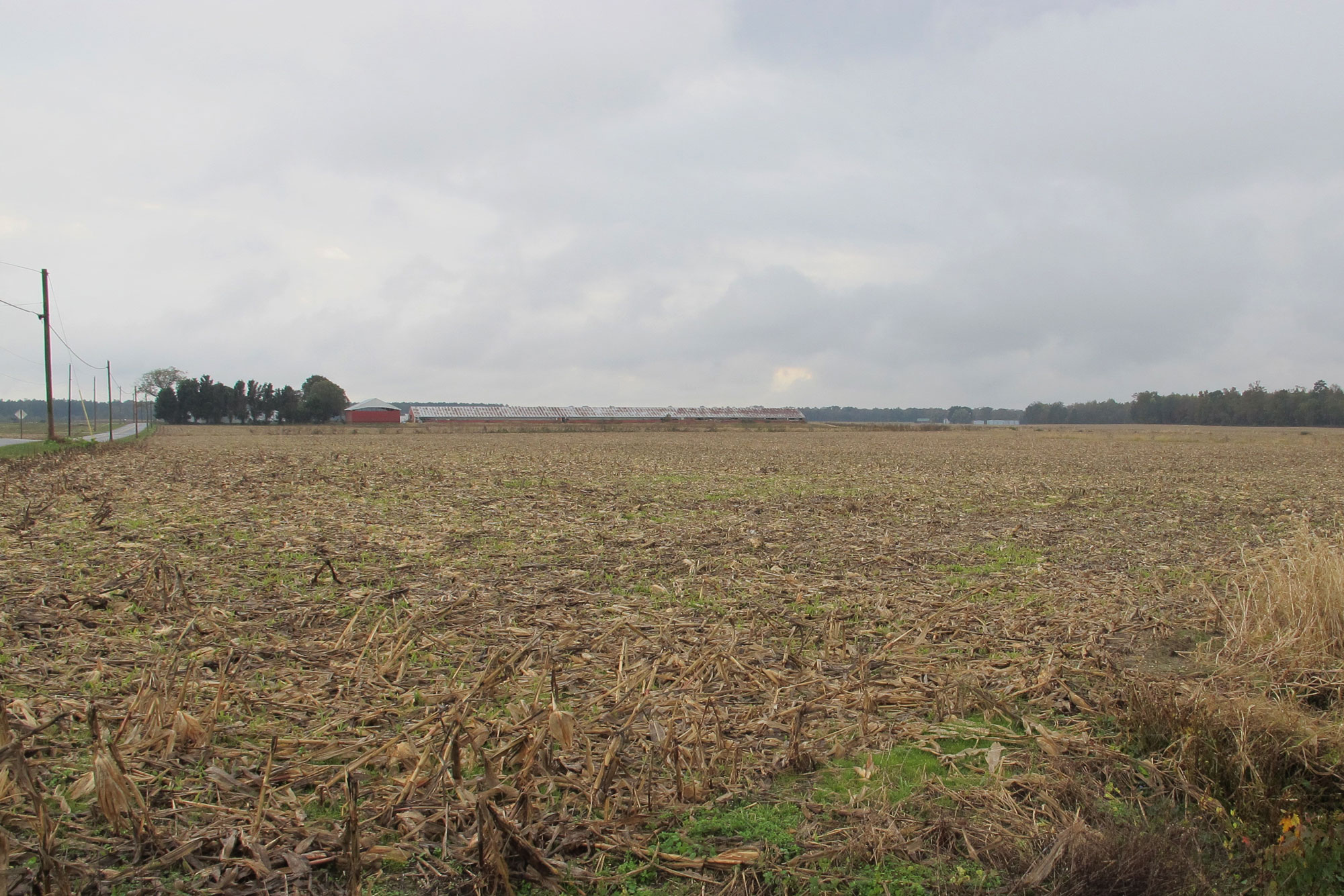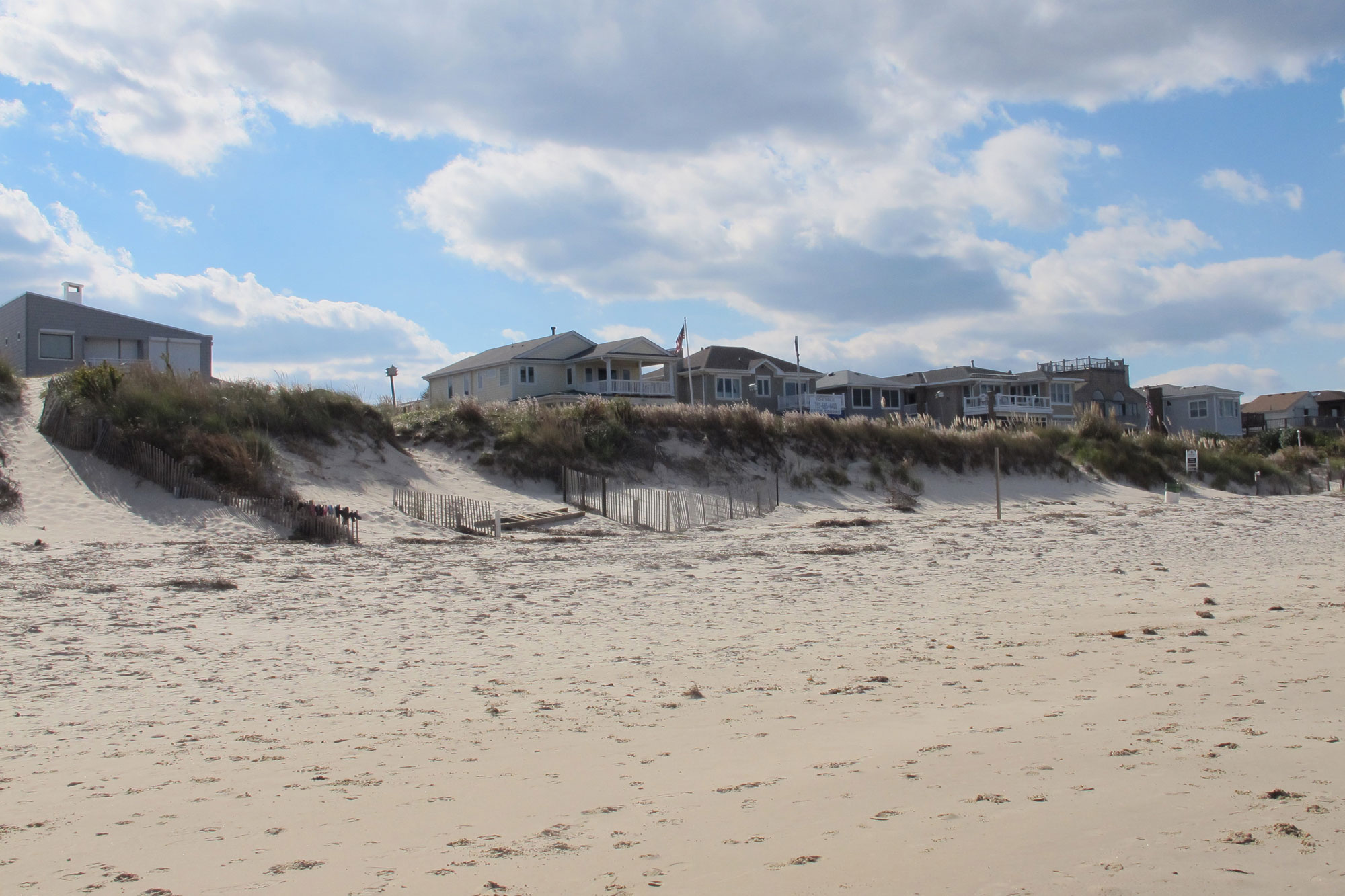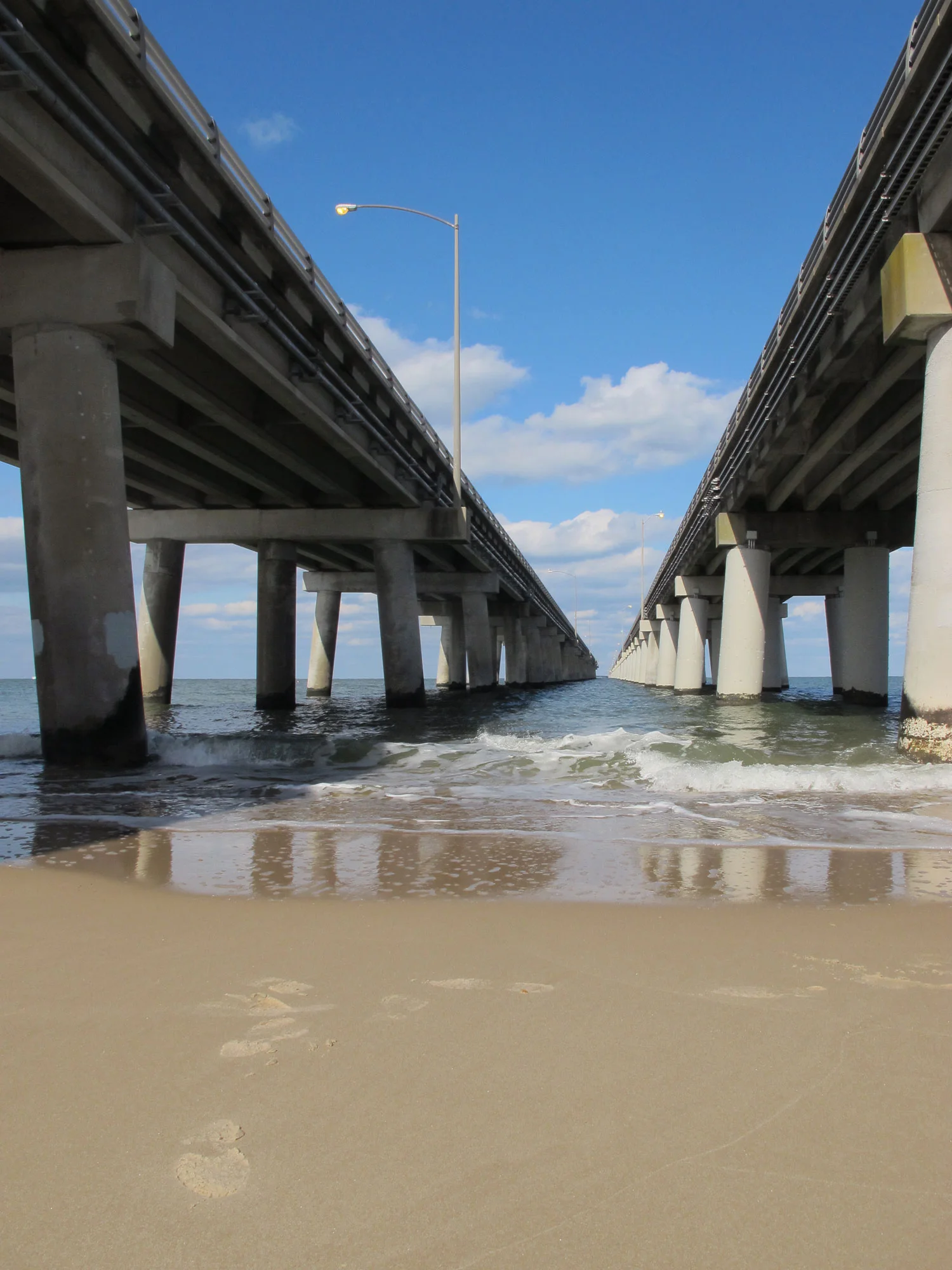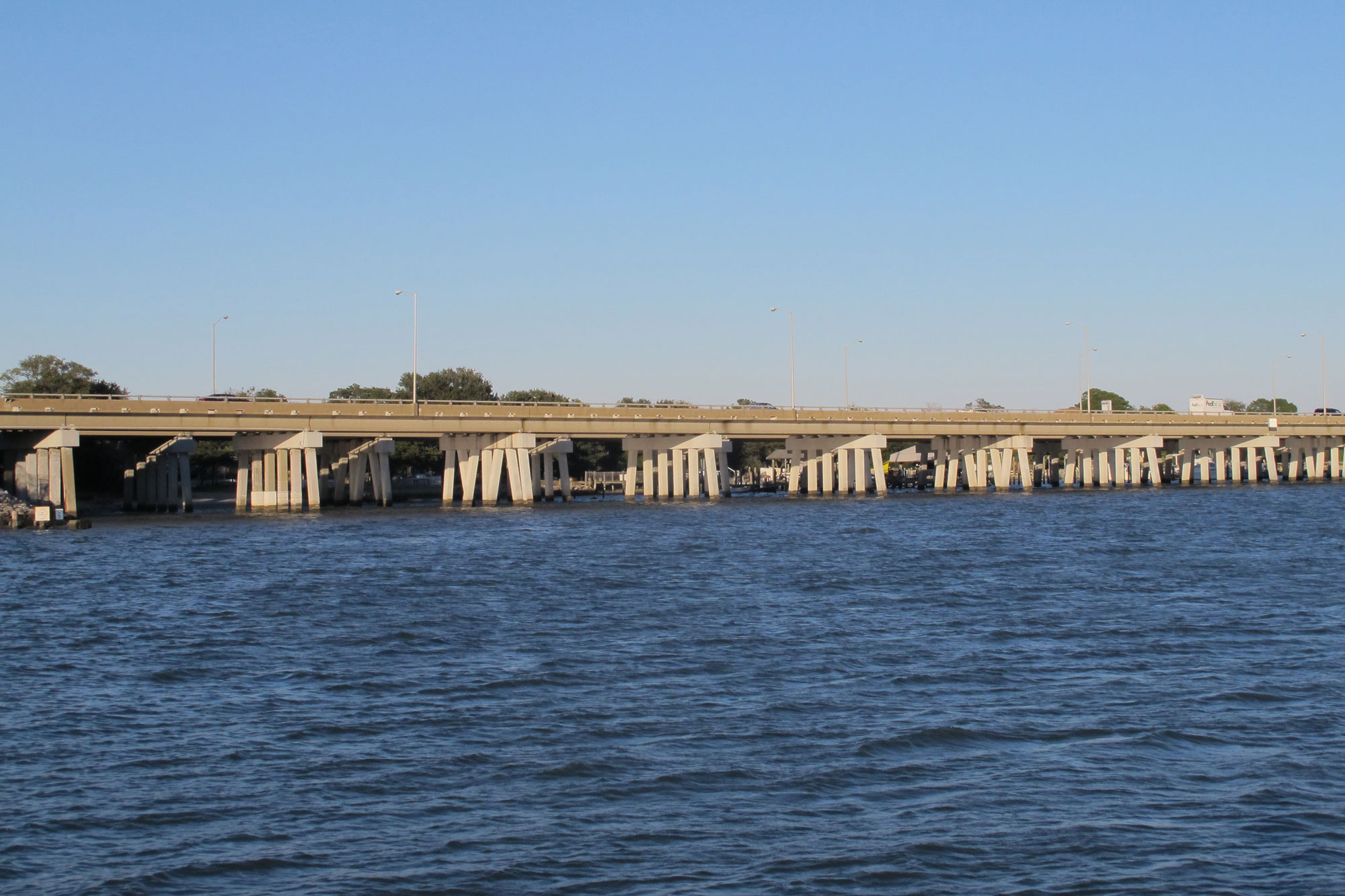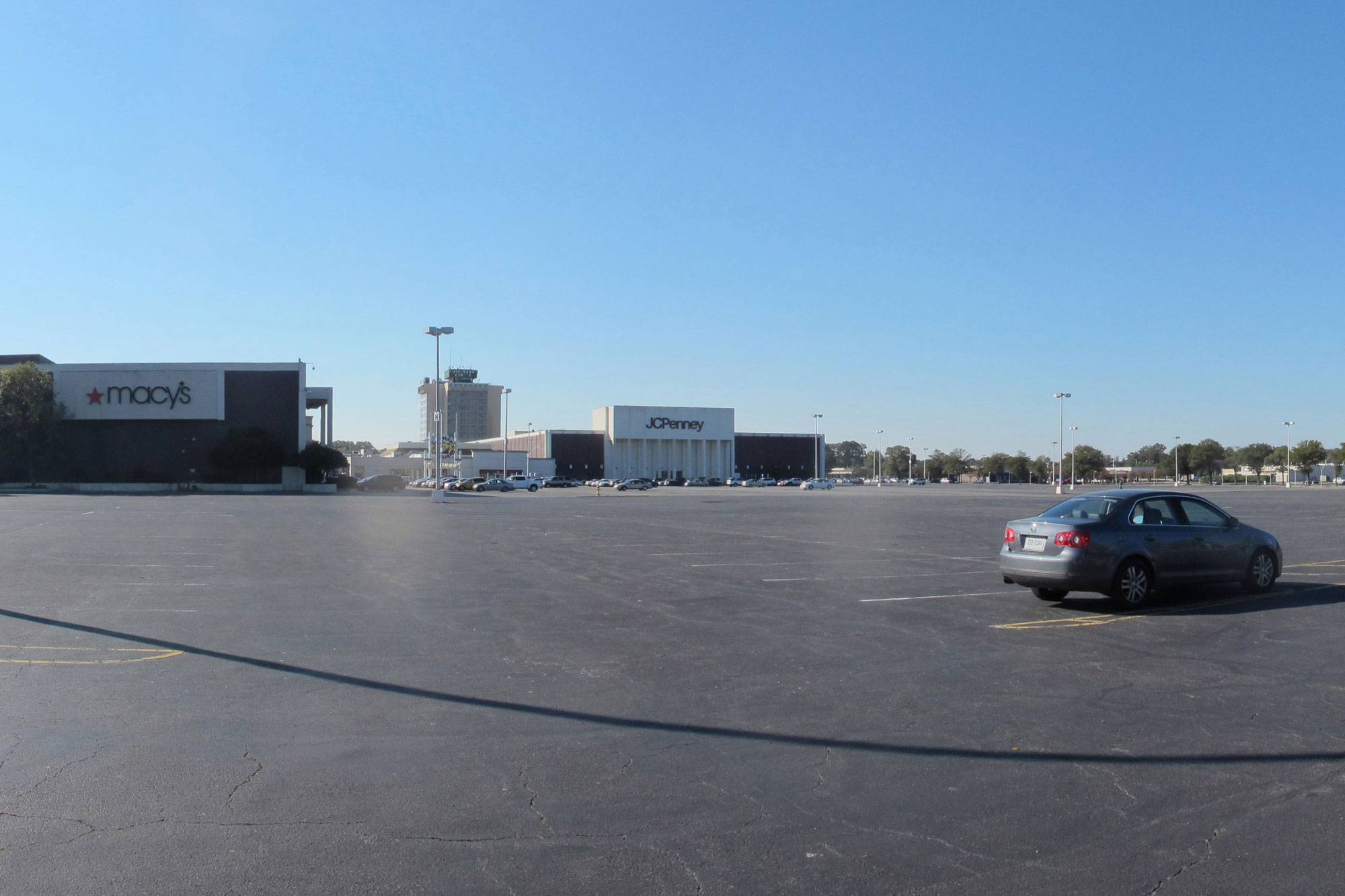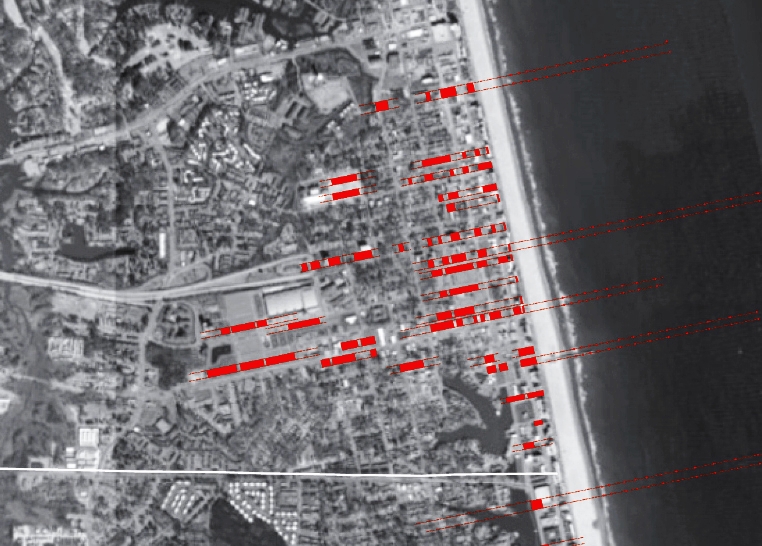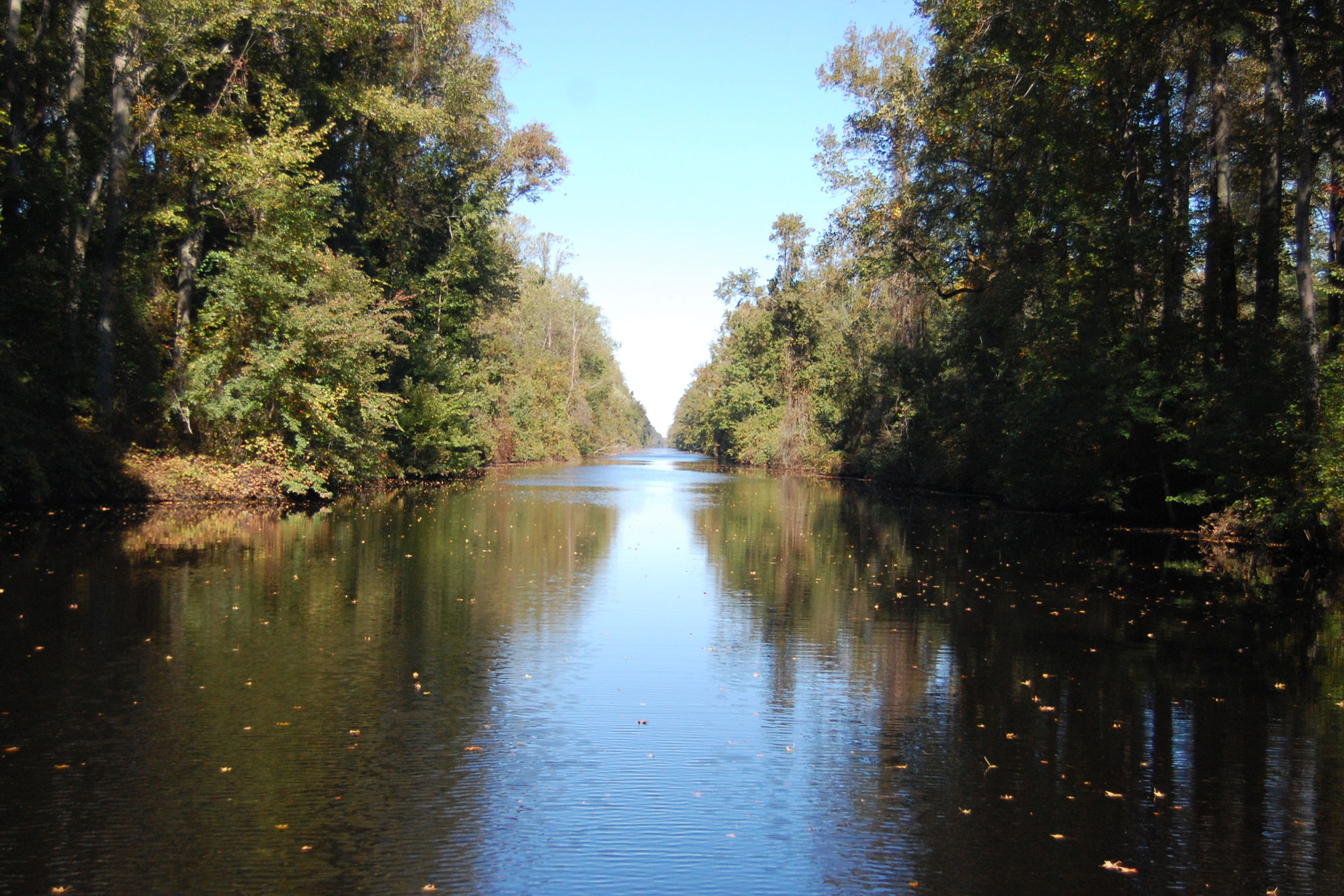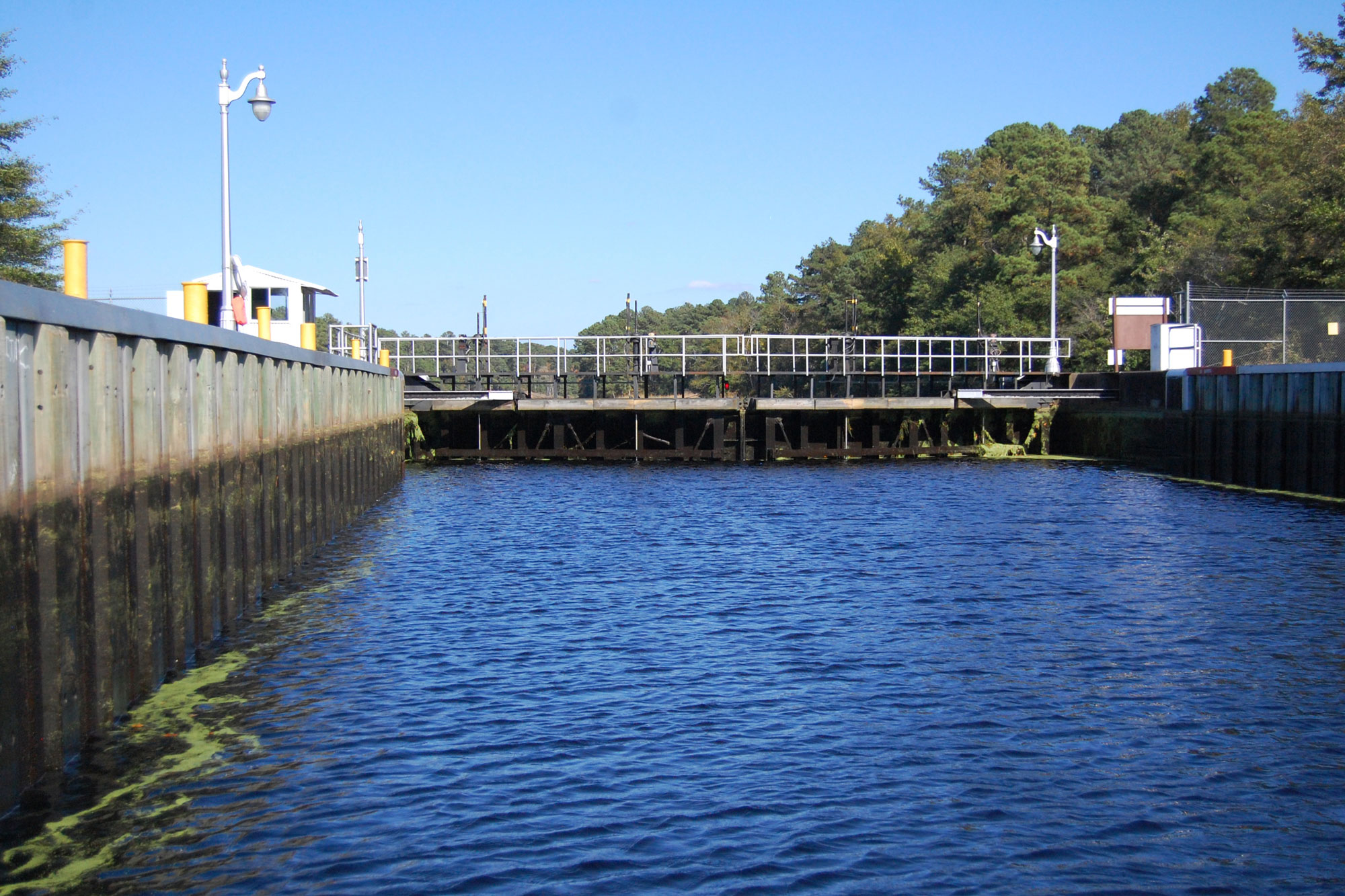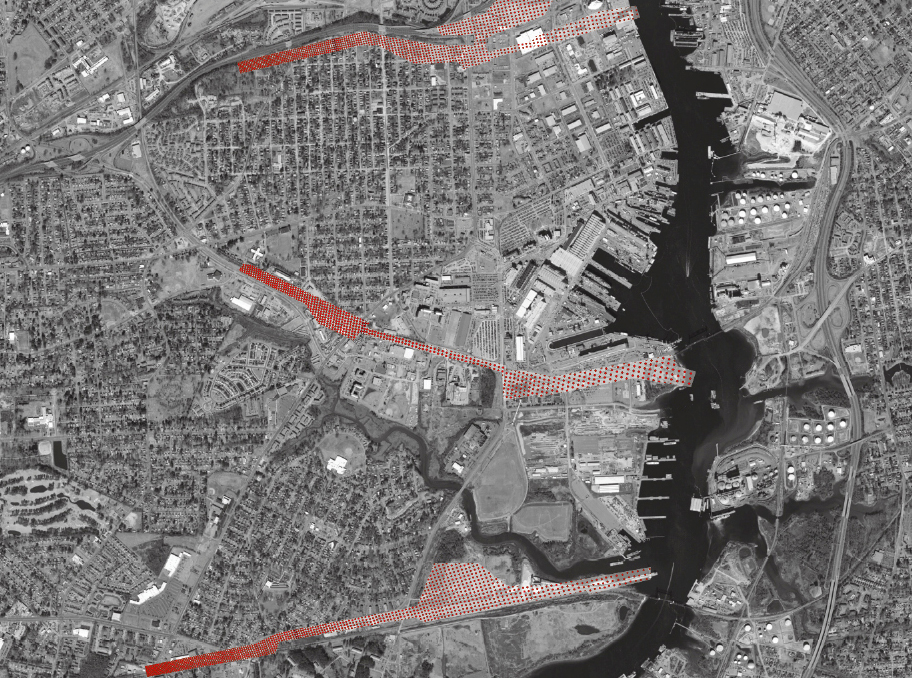STRUCTURES OF COASTAL RESILIENCE
HAMPTON ROADS / NORFOLK, VA
Norfolk is situated at the meeting of the James and Elizabeth Rivers and the Chesapeake Bay. It is a place of strategic importance, being home to the largest naval station in the world as well as one of the most important commercial ports on the eastern seaboard. Sea-level rise here has been unusually high, and amplified by land subsidence. In the last 80 years it has been measured at 14.5 inches—5 inches more than in New York. Norfolk and the region of the Lower Chesapeake is an opportune place to investigate structures of coastal resilience.
In a storm event, but increasingly in a regular rain, people in Norfolk are caught between high seas, particularly in a time of high tide, and rain backing up in creeks and stormwater drains. The city is considering walls, gates and pumps in various locations. But this can only be a short-term solution. In the long term, Norfolk does not call for barriers and protection; it calls for design interventions that stem from a new visualization of the coast and coastal settlement.
This project visualizes future settlement on the coast not on a continuous ‘front’ between land and sea, but in a series of discrete ‘fingers of high ground’ (FHG). Each FHG, raised with the addition of soil, is a gathering of gradients between land and sea, structuring a coast that is more fractured, cumulative and diverse than it is continuous, linear, and absolute. Extensive dredging operations in the rivers and bay adjoining Norfolk provide material for these FHG which in the immediate can serve as places of refuge in times of storm and surge. In the long term they can become grounds for new settlement and ecologically sensitive infrastructure
The SCR project initiated by Professor Guy Nordenson of Princeton University was supported by the Rockefeller Foundation.
The PennDesign Team charged with developing proposals for Norfolk and the Hampton Roads area were led by Anuradha Mathur and Dilip da Cunha. Team members included Caitlin Squier-Roper (Lead Research Associate & Project Coordinator), Jamee Kominsky (Research Associate), Graham Laird Prentice (Research Associate) and Matthew J. Wiener (Research Assistant).
